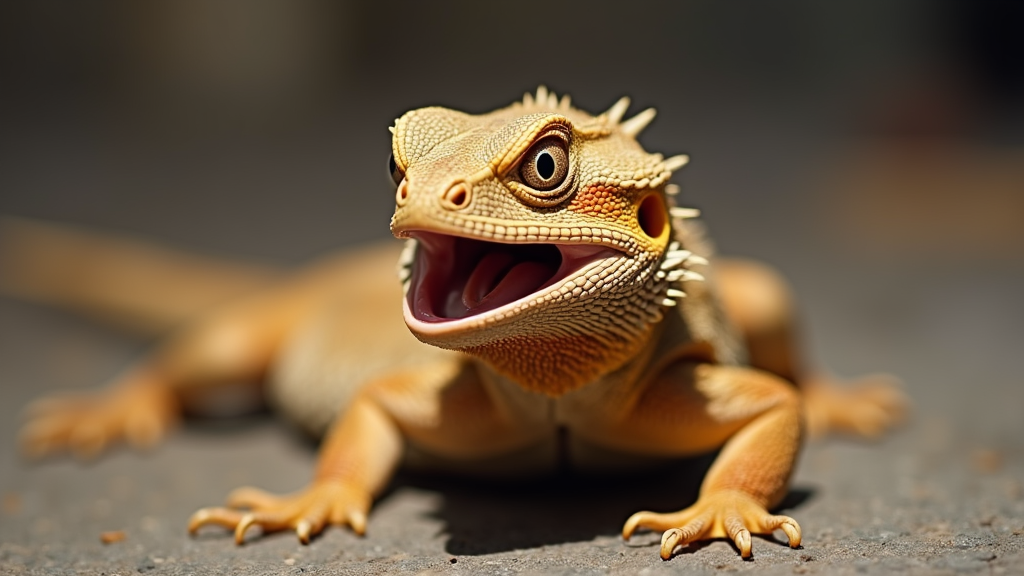Bearded Dragons, or ‘beardies’ as they are affectionately known, are typically docile and gentle pets. However, even these calm creatures can exhibit aggressive behaviour from time to time. As a long-time bearded dragon owner, I’ve encountered my share of feisty dragons and discovered various solutions to manage and mitigate aggression. Let’s dive into the world of bearded dragon aggression and explore practical solutions to keep your reptilian friend happy and harmonious.
Understanding Bearded Dragon Aggression
Signs of Aggression
Recognising the signs of aggression in your bearded dragon is paramount. While they may not growl like a dog or swipe like a cat, their body language speaks volumes. Key indicators include:
- Puffing up their beard: This is a classic sign of distress. When a beardie puffs up, it’s trying to appear larger and more intimidating.
- Hissing: Just like a snake, hissing is a clear warning to stay back.
- Bobbing Head Rapidly: This can signify dominance or agitation.
- Colour Change: Their beard might turn black as a signal of displeasure or stress.
- Tail Twitching: Similar to cats, a twitching tail indicates that they’re not comfortable or are about to lash out.
Common Causes of Aggression
Territory and Dominance
Like many animals, bearded dragons can be territorial. If your beardie feels its turf is being invaded, aggression can follow. This is especially true if you have more than one dragon. In my early days of beardie ownership, I made the rookie mistake of housing two males together, which resulted in frequent territory disputes.
Mating Season
During mating season, male beardies’ behaviour can be quite unpredictable. They might become more aggressive as they attempt to assert dominance and attract a mate. Recognising this seasonal change and altering your interaction accordingly can help reduce stress for both you and your pet.
Improper Handling
Sometimes, aggression stems from how a bearded dragon is handled. If they feel threatened or are handled roughly, they might lash out. Always approach and handle your beardie gently and confidently.
Health Issues
It’s worth noting that health problems can also trigger aggressive behaviour. If your usually placid pet becomes aggressive, a visit to the vet is advisable to rule out any underlying health issues.
Solutions to Mitigate Aggression
Proper Socialisation
Socialising your bearded dragon from a young age can help reduce aggression. Gentle, regular interaction will make your beardie accustomed to human touch and presence.
- Spend time daily with your dragon, allowing them to get used to your scent and voice.
- Use soothing tones and slow movements to prevent startling them.
- Give treats during handling sessions to create positive associations.
Setup and Environment
Creating a comfortable and appropriately sized habitat is crucial.
- Ensure ample space: A cramped tank can cause stress and territorial disputes.
- Provide hiding spots: These allow your beardie to retreat and feel safe.
- Maintain proper temperature and lighting: Ensure the basking spot is between 95-105°F (35-40°C) and the cool side is around 75-85°F (24-29°C). Inadequate temperatures can lead to stress and aggression.
Handling Techniques
Proper handling is vital for a docile, happy dragon.
- Approach from the side or front: Never from above, as this mimics predator behaviour.
- Support their entire body: Including their legs and tail, to make them feel secure.
- Use calm and confident movements: To prevent startling them.
Rivalry Reduction
If you have multiple bearded dragons, it’s essential to minimise rivalry.
- Separate tanks: Especially for males or during mating season.
- Visual barriers: Use non-transparent dividers if they share the same tank to reduce visual stress triggers.
Expert Insights
Over the years, I’ve seen numerous examples and spoken with fellow enthusiasts. One memorable case involved a friend’s beardie, Spike, who was unusually aggressive. After addressing potential habitat and health issues, they discovered that Spike was simply overstimulated by constant interaction. Reducing handling time and ensuring more rest periods significantly improved his temperament.
Conclusion
While bearded dragon aggression can be unsettling, understanding its causes and implementing appropriate solutions can create a more harmonious relationship between you and your pet. Always remember that patience and consistency are key. If aggressive behaviour persists despite your best efforts, consulting with a reptile veterinarian can provide additional insights and solutions.
In summary, comprehending and addressing the root causes of your bearded dragon’s aggression goes a long way in promoting a calm and happy environment. With the right care, handling, and habitat, you’ll ensure that your bearded dragon remains the charming, docile pet you adore.
Learn more about bearded dragon behaviour problems.

